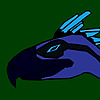HOME | DD
 AuraTerrorbird — Savanna Savage (Feroxvenator vulgaris)
AuraTerrorbird — Savanna Savage (Feroxvenator vulgaris)

#futureevolution #speculativeevolution
Published: 2017-03-25 23:22:02 +0000 UTC; Views: 1902; Favourites: 21; Downloads: 0
Redirect to original
Description
As the apex predators of the African savanna, the big cats such as leopards and lions were driven to extinction by a combination of habitat loss and illegal poaching, new predators will evolve to take their place. On the African mainland, they would evolve from smaller cats, jackals, hyenas and other obvious small mammalian predators of sub-Saharan African. On the island of Paranisi, an island that was once eastern Africa which broke off from the mainland some 20 million years before, the isolated environment would cause evolution to produce very different results. However, while giga crocs may be the dominant land predators on Paranisi, the island is also home to a powerful mammalian predator that is just as dangerous, the savanna savage.These large carnivorans may resemble and be about the size of an Amphicyon of the now extinct bear dogs, but is actually descended from a small but ferocious mustelid from Africa and Asia known as the honey badger or ratel. As Paranisi breaks off from Africa 10 myf along with little competition on the island aside from Nile crocodiles that would evolve giga crocs, the honey badger quickly seized the opportunity to grow much bigger, evolving into the savanna savage. It's one of the top land predators on Paranisi, second only to the giga crocs.
These Amphicyon-sized mustelids usually hunt their prey via ambush, either from dense savanna grasses and bushes or from the trees like a modern day leopard. Their prey vastly ranges from small rodents, birds and reptiles to the tall and skinny gerenaffe (a giraffe-like descendant of the gerenuk) to their usual prey, large cattle-like descendants of gazelles. Savanna savages retain the thick, tough skin of their honey badger ancestors as it usually helps them avoid serious injury when fighting their main competition, giga crocs, over kills and carcasses, as well as when they're protecting their young from giga crocs and other potential predators.
The savanna savage has a similar fur color as its ratel ancestor, except the stripe on its back is cream-colored and its black fur is now a dark brownish-grey. Savanna savages retain the long, lightly-colored stripe on their back to help them camouflage in the thick savanna grasses, shrubs and trees when stalking their prey. The ears of the savanna savage have gotten somewhat larger and have moved higher up on the head to give them a better sense of hearing. Its tail has become longer to give it more balance while running and when it turns while running so the savanna savage doesn't fall over when chasing prey.
As mentioned before, the savanna savage usually hunts its prey via ambush. This is because while savanna savages can run as fast as 40 mph, they can only do so in short bursts before tiring out. The claws of savanna savages have evolved to be used less for digging, and more for climbing tree and holding onto prey.
Related content
Comments: 3

In my opinion, while many mustelids, like this one in your pic, replaces felines, I think the small felines (I probably think there is still felines out there, though represented by small cats) would take the roles of bears.
Just suggesting.
👍: 0 ⏩: 1

I'm planning for the cats and hyenas to stay as apex predators in sub-Saharan mainland Africa.
👍: 0 ⏩: 1

















